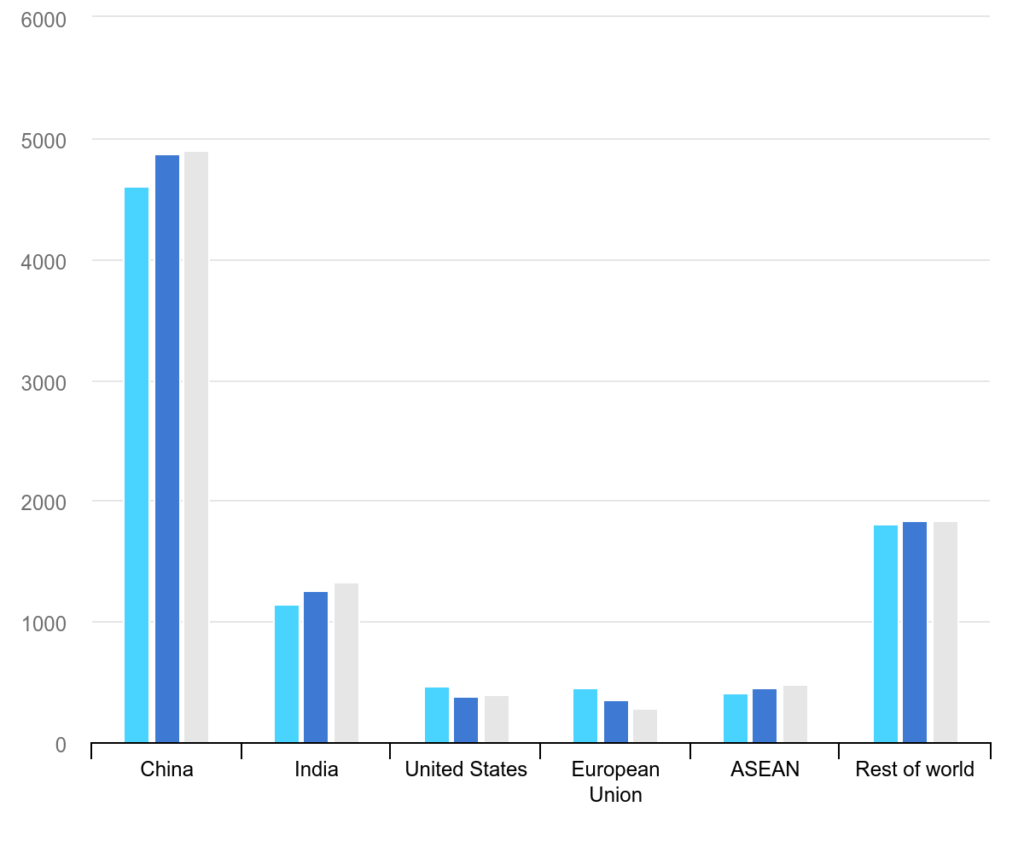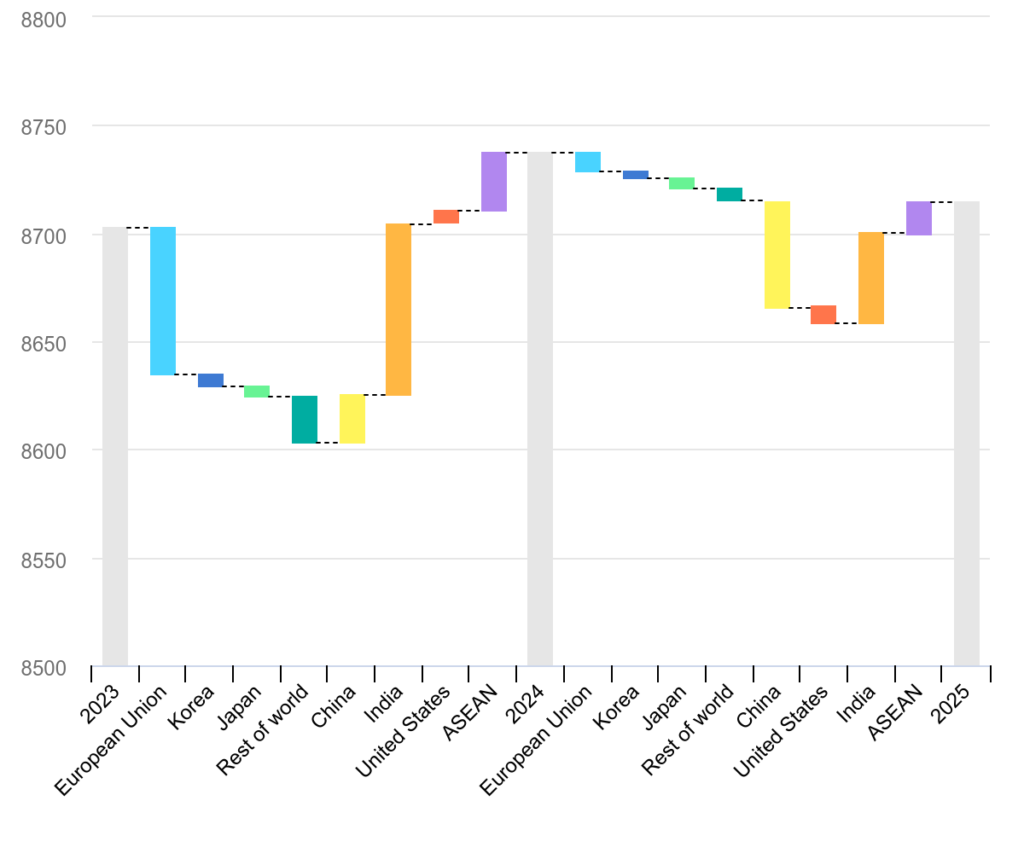Global coal demand to remain largely stable through 2025 — IEA

Global consumption of coal is set to remain largely stable this year and the next as surging electricity demand in key economies will likely offset the rapid expansion of renewables such as solar and wind, the International Energy Agency (IEA) said in a recent market report.
In 2023, the world’s use of coal rose by 2.6% to set a new all-time high of 8.70 billion tonnes, driven by strong growth in China and India, the two largest consumers globally, the IEA’s July 2024 Coal Mid-Year Update finds.
Driving forces
While coal demand grew in both the electricity and industrial sectors, the main driver, according to the IEA, was the use of coal to fill the gap created by low hydropower output and rapidly rising electricity demand.
This trend is expected to continue this year, with global coal demand forecast to rise marginally by 0.4% to roughly 8.74 billion tonnes, the IEA report says.
In its last publication, the Agency previously predicted a decrease in demand in 2024, with a moderate decline thereafter. However, this forecast, it says, required two conditions: a recovery of hydropower generation in China after years of low rainfall, and a slowdown in Chinese electricity demand growth; the latter of which did not materialize.
“The continued rapid deployment of solar and wind, combined with the recovery of hydropower in China, is putting significant pressure on coal use. But the electricity sector is the main driver of global coal demand, and electricity consumption is growing very strongly in several major economies,” stated Keisuke Sadamori, IEA director of energy markets and security.
“Without such rapid growth in electricity demand, we would be seeing a decline in global coal use this year. And the structural trends at work mean that global coal demand is set to reach a turning point and start declining soon.”
Regional demand
China, the world’s largest producer and consumer of coal accounting for more than half of the global consumption, saw its electricity demand rebound in 2023, growing by 7%. Another major annual increase in China’s electricity demand is expected this year (6.5%), the IEA forecasts, despite a recovery in the hydropower sector combined with rapid deployment of solar and wind.
India, the second-largest source of global coal consumption, saw double-digit growth (10%) in coal demand for power generation last year. Unlike in many other parts of the world, in India, growth in renewable energy sources is unable to keep pace with the growth in power demand. In the first half of the year, India’s coal consumption rose sharply as a result of low hydropower output and a massive increase in electricity demand due to extreme heatwaves and strong economic growth.

In Europe, coal demand is continuing on the downward trend that began in the late 2000s, largely due to emissions reduction efforts in power generation. After having fallen by more than 25% in 2023, coal power generation in the European Union is forecast to drop by almost as much again this year, the IEA says.
Coal use has also been contracting significantly in the United States in recent years, but stronger electricity demand and less switching from coal to natural gas threaten to slow this trend in 2024, it adds.
Meanwhile, Japan and Korea are continuing to reduce their reliance on coal, although at a slower pace than Europe.
Demand reversal
In 2025, the IEA estimates global coal demand to enter a trend reversal after four years of growth, decreasing slightly by 0.3% to a total of 8.71 billion tonnes.
A key reason is that China, which has traditionally driven coal demand growth, is likely to show its first decline in coal demand since 2016. It is estimated that Chinese coal demand in the power sector will decline by 1.1% in 2025, since renewables are likely to outgrow power demand.
This, combined with ongoing declines in the European Union, United States, Japan, Korea, and other parts of the world, is expected to outweigh continuous growth in India and ASEAN, it says.

Supply forecast
On the supply side, global coal production is expected to decrease slightly in 2024 after steady growth the year before, the IEA says.
In 2024, coal production in China is moderating after two years of staggering growth. In India, the push to boost coal production continues, with a supply increase of around 10% expected in 2024. In advanced economies, coal production is in decline, broadly reflecting demand.
The report also finds that trade volumes are at the highest levels ever seen despite the collapse of imports in Europe and the decline in imports in Northeast Asia (Japan, Korea and Chinese Taipei) since 2017.
However, other countries are stepping in to take up available supply, it adds. In 2024, Vietnam is set to become the fifth largest coal importer, surpassing Chinese Taipei. Imports to China and India remain at all-time highs.
{{ commodity.name }}
{{ post.title }}
{{ post.date }}


Comments